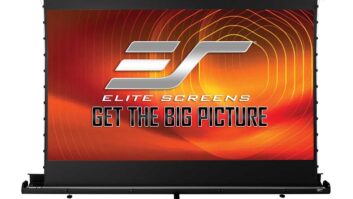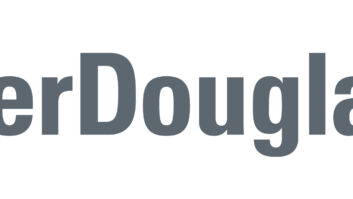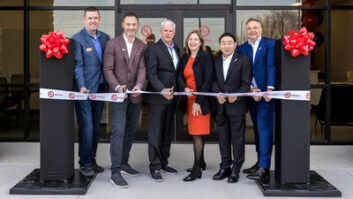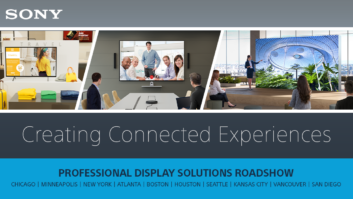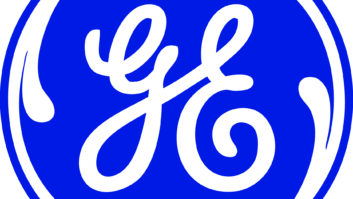Ethernet-based home networking products will gain a stronger foothold in the custom-installation market in 2003, when upscale home control will become available to a broader segment of the population because of new low-cost touch screens.
Some of the products were displayed at the recent CES and International Builders Shows, and others will debut at September’s CEDIA Expo.
Here’s what select custom companies plan to offer in 2003:
Home control: To bring two-way home control to a broader customer base, Home Automation Inc. will ship a 3.9-inch touch-screen controller in March at $799. The touch panel, which uses icons, works with HAI’s Omni product family to control security, HVAC, lighting and other home functions. HAI is targeting existing mid- to high-end homes and small commercial establishments. Changes made to an Omni-family system automatically appear on the touch screen.
The company was able to hit the price point because of technology advances and volume manufacturing, president Jay McClellan said.
For its part, Xantech will ship a line of affordable touch-screen controllers ranging from 3.9 inches to 6.4 inches. Suggested retail prices are $750, $1,000, $1,300 and $2,000, said marketing director Bob Kielhorn. All are infrared- and RS-232-compatible and programmable via Dragon-Drop infrared software. The 3.9- and 5.7-inch models feature 320 by 240 resolution, and the 6.4-inch model steps up to 640 by 480 pixels. The top 6.4-inch model, also with 640 by 480 resolution, adds video and video PIP capability.
Ethernet-based solutions: IntelliNet Controls is leveraging the economies of scale of Web and Ethernet technologies in its RS3000 distributed-audio system, which sends control signals — but not audio — over a home’s Ethernet network. It can be programmed and controlled through Web-based devices such as wireless Web pads and laptops, and it lets installers remotely troubleshoot and reconfigure a system in real time from their office PC’s Web browser. The system will be able to integrate with doorbells and homewide paging systems and offer source-power management.
Shipping is slated for the first quarter at a suggested $7,995.
The RS3000 includes the Control 4 flash-memory-based Web server, which would typically be located near a consumer’s main A/V equipment and would connect via Ethernet to a Digital Hub, which could be installed anywhere in a home. It could also be installed in the wall behind the A/V equipment. The system’s in-wall keypads connect directly to the hub via unshielded twisted pair wire.
Compared to distributed-audio systems based on proprietary touch-screen-control technologies, an RS3000’s cost-per-zone is lower, said product marketing manager Jeff Myatt. A six-zone RS3000 system can retail for $1,350-$1,550 per zone, excluding amplification and speakers compared to about $1,700-$2,000, he claimed.
Additional savings accrue if a consumer uses a standard $500 wireless-enabled Web pad and a low-cost LAN-connected 802.11b wireless access point to control the system instead of wireless touch screens, priced at around $1,000 and up, that use a proprietary user interface technology.
In the second quarter of 2003, NetStreams plans to ship its fully digital DigiLinX system, said chief technology officer Mike Braithwaite. DigiLinX is a full digital-distribution system unlike the hybrid Musica Digital digital/analog system, a UPnP-based system that shipped in November.
The price of the DigiLinX system will be comparable to an Audio Design or Crestron eight- or 12-zone audio system, Braithwaite said.
DigiLinX includes a SpeakerLinX module, which plugs into the back of a speaker and incorporates a digital audio decoder and digital amp and plugs. Installers remove the passive crossover from a conventional speaker and replace it with a SpeakerLinX module, which accepts wires from the woofer and tweeter. The module also features a CAT-5 connection and low-voltage power connection to get power from the system’s head end, called the PowerLinX. It’s an Ethernet switch that doubles as power supply for the speakers’ digital amps. Digital audio signals are sent in packet form to the speakers’ decoders via CAT-5.
To control legacy devices with infrared or RS-232 serial control, NetStreams will offer the AudioLinX audio/video server.
The DigiLinX system can be controlled by conventional controllers by basic wall-mount keypads, or by DigiLinX Web pages through a laptop, network-enabled PDA, or Web tablet.
For its part, Sonance previewed network concepts to dealers at CEDIA and plans to ship a version in the second quarter. One concept shown was an integrated product combining in-wall speaker, amplifier and DAC in one unit, but “most installers said they preferred to have amplifiers as a node on an audio network separate from the speakers for upgrade simplicity,” said marketing director Petro Shimonishi. “We want to make our system flexible enough so that no matter which piece of equipment the installer wants to make a node on the network, they’ll be able to do it.”
“Eventually everything is going to be digital transmission,” Shimonishi continued. “Then you can drastically reduce the time that it takes to program, connect, and identify devices.” But the market for that is still in its infancy, she admitted.
Niles plans to show a networked audio distribution system at CEDIA 2003, said president Ivan Zuckerman, who remains cautious about the emerging category. “Networked audio is still quirky,” Zuckerman claimed. “When you start getting into TCP/IP and the possible set-up mistakes you can make, it’s still not ready for prime time. You’re talking about installers having to become the system integrators of computer networks.”







